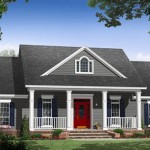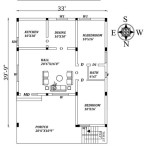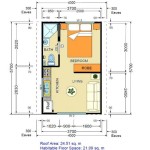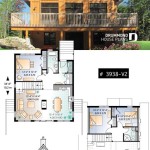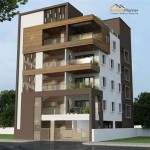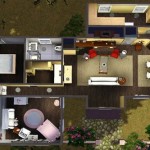A Comprehensive Guide to Essential Aspects of First Floor House Plan
When designing the first floor of your home, numerous crucial aspects need to be meticulously considered to create a functional, comfortable, and aesthetically pleasing living space. From room layout to traffic flow, every element plays a pivotal role. This comprehensive guide will delve into the essential aspects of first floor house plans, empowering you to make informed decisions and create a home that meets your needs and aspirations.
Layout and Room Configuration
The layout of your first floor establishes the overall structure and functionality of the living space. Carefully consider the placement of rooms, their size, and their interconnections. An efficient floor plan should minimize wasted space while creating natural flow between different functional areas. Open floor plans promote a sense of spaciousness and foster social interaction, while more traditional layouts provide greater privacy and separation.
Kitchen Design: Functionality and Aesthetics
The kitchen is often regarded as the heart of the home, and its design is of paramount importance. Optimize functionality by incorporating a well-thought-out layout known as the "kitchen triangle" that establishes an efficient relationship between the sink, stove, and refrigerator. Consider the type of appliances you need and the amount of storage space required. Additionally, the kitchen's aesthetic should complement the overall design style of your home, creating a cohesive living space.
Living and Dining Areas: Comfort and Style
The living and dining areas are the focal points of your home where you gather with family and friends. Ensure that these spaces are well-proportioned and arranged to accommodate your desired furniture and activities. Natural light is a crucial factor in creating a bright and inviting ambiance; incorporate large windows or skylights whenever possible. The decor and furnishings should reflect your personal style and create a comfortable and welcoming atmosphere.
Bedroom and Bathroom Design: Privacy and Functionality
Bedrooms should provide a tranquil retreat with ample space for your bed and other furniture. Consider the size and layout of the room to create a comfortable and functional sleeping environment. Bathrooms should be well-planned, with convenient access from bedrooms and common areas. Optimize the layout for efficiency and privacy by incorporating separate zones for the shower, toilet, and vanity. Adequate ventilation and natural lighting are essential for maintaining a fresh and hygienic bathroom space.
Storage and Closets: Organization and Accessibility
Adequate storage is crucial for maintaining an organized and clutter-free home. Plan for ample closet space throughout the first floor, particularly in bedrooms, entryways, and the kitchen. Consider the types of items you need to store and customize closets accordingly, incorporating shelves, drawers, and hanging rods as needed. Hidden storage solutions, such as under-stair drawers or built-in cabinets, can maximize space utilization without compromising aesthetics.
Traffic Flow: Ease of Movement
Thoughtfully consider the flow of traffic throughout the first floor. Avoid creating bottlenecks or awkward transitions between rooms. Ensure that the main entryway, hallways, and doors are wide enough for comfortable movement. Minimize obstacles and provide ample space for furniture and other household items to prevent accidents and maintain a seamless flow of movement throughout the living space.
Natural Light and Ventilation: Health and Ambiance
Natural light and ventilation are essential elements that significantly impact the health and well-being of the occupants. Large windows and skylights allow for ample sunlight to penetrate the home, creating a brighter and more inviting atmosphere. Proper ventilation is crucial for maintaining good indoor air quality and regulating temperature. Incorporate windows that can be opened, exhaust fans in bathrooms and kitchens, and consider cross-ventilation to ensure fresh air circulation throughout the first floor.
Exterior Facade and Curb Appeal
While this guide focuses on the interior of the first floor, it's important to consider the exterior facade and its impact on curb appeal. The exterior design should complement the architectural style of the home and blend harmoniously with the surrounding environment. Consider the materials used, the color scheme, and the overall aesthetic to create an impressive and inviting first impression.
By carefully considering and incorporating these essential aspects into your first floor house plan, you can create a home that is both functional and beautiful. It will not only meet your immediate needs but will also provide a comfortable, healthy, and enjoyable living space for many years to come. Remember to seek professional advice from architects or interior designers if you need further guidance or have complex requirements to ensure a successful and fulfilling home design experience.

4 Bhk House Plan With Ground Floor And First Small Plans How To

30 X50 House Ground Floor And First Plan With Furniture Layout Drawing Dwg File One Plans

27 42 1st Floor Simple House Plans Square Budget

Floor Plan Of House 1 For The Ground Left First Center Scientific Diagram

My Home First Floor Design Ideas Pictures 105 Sqm Homestyler

Fresh Two Story House Plan With First Floor Master Bedroom 280096jwd Architectural Designs Plans

30 X 45 East Face Ground And First Floor Plan Details

Cottage House Plan With 3 Bedrooms And 2 5 Baths 5269

Ground Floor And First Small House Planning Autocad File Cadbull

The Ground And First Floor Plan Of Selected Detached House Scientific Diagram



